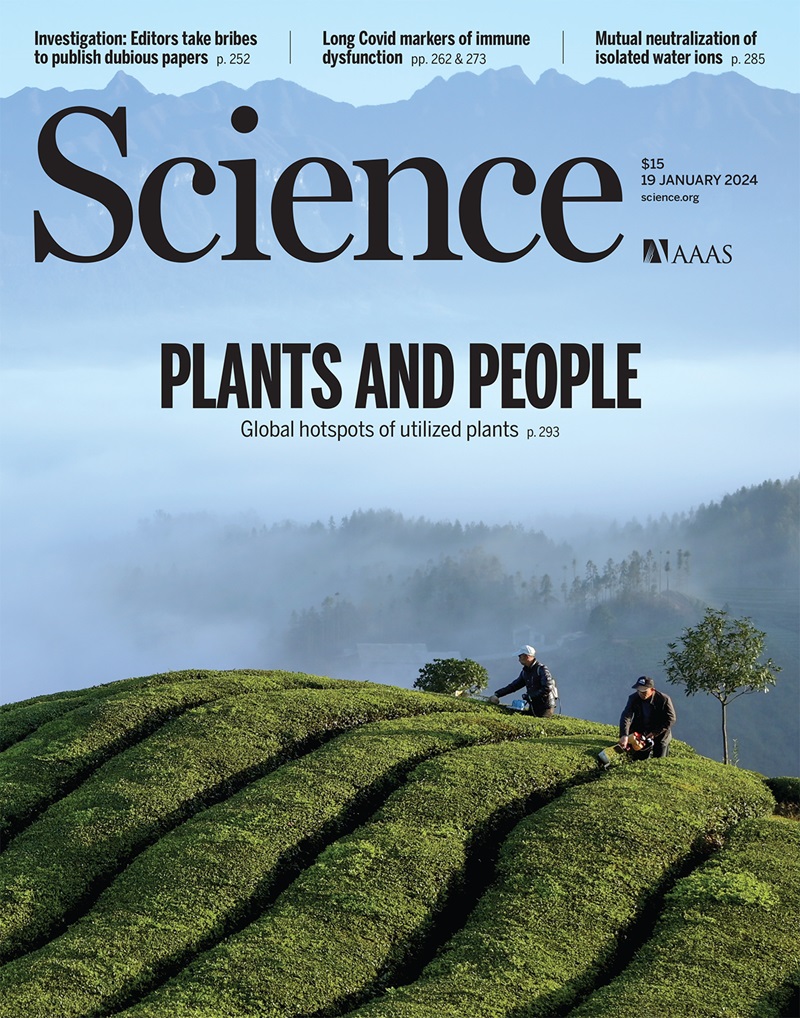从孕妇血液中提取的化学物质的神经毒性混合物效应
IF 45.8
1区 综合性期刊
Q1 MULTIDISCIPLINARY SCIENCES
引用次数: 0
摘要
人体生物监测研究通常只能捕捉到整个化学领域中一小部分未知的化学物质。我们将化学分析与高通量体外神经毒性检测相结合,捕捉血液中复杂的有机化学混合物。我们采用有机化学品非选择性萃取法提取了德国 LiNA 队列中 624 名孕妇的血浆样本。检测并量化了 294 个目标分析物。检测到的许多化学物质以及整个提取物都会干扰神经元的发育。在神经毒性实验中对检测到的化学物质的模拟复杂混合物进行的实验测试证实,在浓度低于单个化学物质的效应阈值时,混合物会产生叠加效应。高通量目标筛选与生物测定相结合的使用有可能改善人类生物监测,并为将混合物效应纳入流行病学研究提供了一种新方法。本文章由计算机程序翻译,如有差异,请以英文原文为准。

Neurotoxic mixture effects of chemicals extracted from blood of pregnant women
Human biomonitoring studies typically capture only a small and unknown fraction of the entire chemical universe. We combined chemical analysis with a high-throughput in vitro assay for neurotoxicity to capture complex mixtures of organic chemicals in blood. Plasma samples of 624 pregnant women from the German LiNA cohort were extracted with a nonselective extraction method for organic chemicals. 294 of >1000 target analytes were detected and quantified. Many of the detected chemicals as well as the whole extracts interfered with neurite development. Experimental testing of simulated complex mixtures of detected chemicals in the neurotoxicity assay confirmed additive mixture effects at concentrations less than individual chemicals’ effect thresholds. The use of high-throughput target screening combined with bioassays has the potential to improve human biomonitoring and provide a new approach to including mixture effects in epidemiological studies.
求助全文
通过发布文献求助,成功后即可免费获取论文全文。
去求助
来源期刊

Science
综合性期刊-综合性期刊
CiteScore
61.10
自引率
0.90%
发文量
0
审稿时长
2.1 months
期刊介绍:
Science is a leading outlet for scientific news, commentary, and cutting-edge research. Through its print and online incarnations, Science reaches an estimated worldwide readership of more than one million. Science’s authorship is global too, and its articles consistently rank among the world's most cited research.
Science serves as a forum for discussion of important issues related to the advancement of science by publishing material on which a consensus has been reached as well as including the presentation of minority or conflicting points of view. Accordingly, all articles published in Science—including editorials, news and comment, and book reviews—are signed and reflect the individual views of the authors and not official points of view adopted by AAAS or the institutions with which the authors are affiliated.
Science seeks to publish those papers that are most influential in their fields or across fields and that will significantly advance scientific understanding. Selected papers should present novel and broadly important data, syntheses, or concepts. They should merit recognition by the wider scientific community and general public provided by publication in Science, beyond that provided by specialty journals. Science welcomes submissions from all fields of science and from any source. The editors are committed to the prompt evaluation and publication of submitted papers while upholding high standards that support reproducibility of published research. Science is published weekly; selected papers are published online ahead of print.
 求助内容:
求助内容: 应助结果提醒方式:
应助结果提醒方式:


